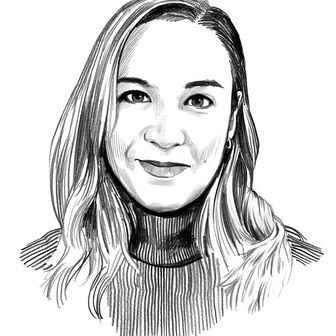
Early in Nickel and Dimed, the great Barbara Ehrenreich offered up a blunt observation. “There are no secret economies that nourish the poor; on the contrary, there are a host of special costs,” she wrote. “If you can’t put up the two months’ rent you need to secure an apartment, you end up paying through the nose for a room by the week,” she explained. “If you have only a room, with a hot plate at best, you can’t save by cooking up huge lentil stews that can be frozen for the week ahead. You eat fast food or the hot dogs and Styrofoam cups of soup that can be microwaved in a convenience store.” For the poor this is no revelation, merely a description of daily life. For many others, though, it was something else, a glimpse into a world that could feel distant. Yet it was not so far away, as she understood: The poor were all around. They worked, they loved, they tried to make do. The poor carried America on their backs and debunked its self-mythologies. So, too, did Ehrenreich, who showed no patience for pretense. She always looked for the truth of a thing, and for decades, she shared her search with all of us.
Now Ehrenreich is gone at the age of 81, and only her work remains. It would be unfair to reduce her long career to Nickel and Dimed, which is probably her most famous book. I begin with it, though, because it’s how I first learned of her — not from school, or from another writer, but from my mother when I was a child. Nickel and Dimed had become a sensation for its incisive and empathetic exploration of working poverty in the U.S. My mother explained the premise to me: Ehrenreich put aside her middle-class life as a writer and undertook a series of low-wage jobs waitressing in Key West, cleaning houses in Maine, and working at a Walmart in Minneapolis. My mother, too, had once cleaned houses in Maine, though she was careful to say that she was treated well by her employers and was a teenager who did not have to support herself on her income. Our own story was not all that far removed from the stories Ehrenreich recounted in her book. My family was headed by two college-educated adults, yet it occupied a strata somewhere between the secure middle class and true poverty. A blow or two could knock us out of position and sentence us to free fall.
What I gleaned from Ehrenreich via my mother was a kind of class consciousness. Later, when I read Nickel and Dimed for myself in my early 20s, I learned from Ehrenreich the possibilities of journalism: the stories that could be told, the lives that could be brought to the fore, the minds that could be changed. Decades after she first picked up Nickel and Dimed, my mother can still remember in detail the tale of a Walmart associate trying to cobble together the money to buy a stained polo shirt with her employee discount. At $7 an hour, the shirt cost as much as her hourly wage at the time. Ehrenreich, working as an associate in ladieswear, is prepared to offer a 20 percent discount until Howard, a manager, interferes. The woman “looks crushed and I tell her, when Howard’s out of sight, that there’s something wrong when you’re not paid enough to buy a Wal-Mart shirt, a clearanced Wal-Mart shirt with a stain on it,” she wrote.
Ehrenreich illuminated corners that many would prefer to ignore. Trained first as a scientist, she sought to pull back the layers of the world, looking for the truth underneath. The term “seeker” has acquired a New Age valence, but strip that away and it can describe the atheist Ehrenreich, who had a seeking mind. Marxism and feminism, she wrote in her 1976 article, “What Is Socialist Feminism,” “are critical ways of looking at the world.” As such, they “rip away popular mythology and ‘common sense’ wisdom and force us to look at experience in a new way … They lead to conclusions which are jarring and disturbing at the same time that they are liberating.” That must have appealed to Ehrenreich, herself a socialist feminist — both the possibility of liberation and the promise contained within a new way of seeing. Sight, in fact, may be her greatest gift to us. In book after book, column after column, she invited us to see along with her: into the inner lives of middle-class Americans in Fear of Falling; into the lives of the poor in Nickel and Dimed; into the persistent attraction of war in Blood Rites.
What astonished me early about Ehrenreich’s work wasn’t just that she, as an individual, cared about the working poor, but that she could get others to do the same. From my vantage as the daughter of a precarious family, it looked like Ehrenreich had performed a magic trick. With time, though, I came to understand something about how she managed it. Ehrenreich’s power as a social critic is a reflection of her talent as a writer. Her sentences can alternate between plainspoken and poetic. In Living With a Wild God, a memoir of her scientific and metaphysical explorations, she described the universe “as seen from high school physics class, enriched by rumors of relativity: everything reduced to particles rolling around on the wrinkles of space-time, the billiard table of classical physics augmented by Einstein into some vast funereal topography, like the gently furrowed surface of a sunless sea on the distant planet of a dying star.”
She wrote, too, with wit and humor. “Maybe they should be confined to one big locked room stocked with high-tech sex toys and left to fuck themselves sick,” she once wrote of Me Too’s “dethroned patriarchs.” One of my favorite passages in Nickel and Dimed concerns shit and pubic hair, the banes of any house cleaner. She meditated on the differences between various shit stains and observed, “You don’t want to know this? Well, it’s not something I would have chosen to dwell on myself, but the different kinds of stains require different cleaning approaches.” Onto the short and curlies, which she found everywhere. “Once I spent fifteen minutes crouching in a huge four-person Jacuzzi, maddened by the effort of finding the dark little coils camouflaged against the eggplant-colored ceramic background but fascinated by the image of the pubes of the economic elite, which must by this time be completely bald.” Ehrenreich was funny, but she always had a point. Nobody contemplates shit or pubic hair out of delight, but people who clean houses for a living don’t have any other choice. Their experiences matter. Once considered, they reveal certain truths not just about the daily activities of the working poor but also about the upper class. Someone has to clean up all their shit.
To walk the trail she marked out is to know, as she did, that there are stories worth telling and fights worth waging. It is to believe, as she did, in liberation, and truth, and joy. “My political instincts were, and remain, resolutely populist,” she wrote in Living With a Wild God. The daughter of a copper miner from Butte, Montana, who went to college and pulled himself up the corporate ladder, Ehrenreich understood there was a fight on and positioned herself early on the right side of it. She inherited this sensibility from her parents, and from the generations before them, she wrote. “So when the sides were drawn up between the powerful and the downtrodden, there had never been any question about where I stood,” she explained in Living With a Wild God. Thank goodness for that, and for her.




























